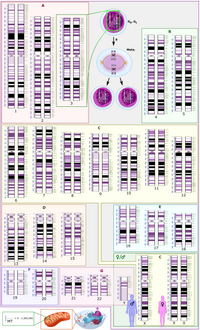
Photo from wikipedia
The basic helix-loop-helix (bHLH) proteins represent a key group of transcription factors implicated in numerous eukaryotic developmental and signal transduction processes. Characterization of bHLHs from model species such as humans,… Click to show full abstract
The basic helix-loop-helix (bHLH) proteins represent a key group of transcription factors implicated in numerous eukaryotic developmental and signal transduction processes. Characterization of bHLHs from model species such as humans, fruit flies, nematodes and plants have yielded important information on their functions and evolutionary origin. However, relatively little is known about bHLHs in non-model organisms despite the availability of a vast number of high-throughput sequencing datasets, enabling previously intractable genome-wide and cross-species analyses to be now performed. We extensively searched for bHLHs in 126 crustacean species represented across major Crustacea taxa and identified 3777 putative bHLH orthologues. We have also included seven whole-genome datasets representative of major arthropod lineages to obtain a more accurate prediction of the full bHLH gene complement. With focus on important food crop species from Decapoda, we further defined higher-order groupings and have successfully recapitulated previous observations in other animals. Importantly, we also observed evidence for lineage-specific bHLH expansions in two basal crustaceans (branchiopod and copepod), suggesting a mode of evolution through gene duplication as an adaptation to changing environments. In-depth analysis on bHLH-PAS members confirms the phenomenon coined as ‘modular evolution’ (independently evolved domains) typically seen in multidomain proteins. With the amphipod Parhyale hawaiensis as the exception, our analyses have focused on crustacean transcriptome datasets. Hence, there is a clear requirement for future analyses on whole-genome sequences to overcome potential limitations associated with transcriptome mining. Nonetheless, the present work will serve as a key resource for future mechanistic and biochemical studies on bHLHs in economically important crustacean food crop species.
Journal Title: Royal Society Open Science
Year Published: 2018
Link to full text (if available)
Share on Social Media: Sign Up to like & get
recommendations!